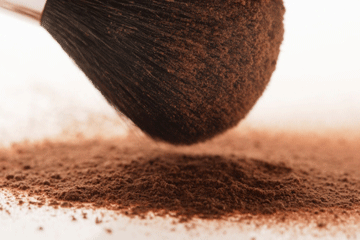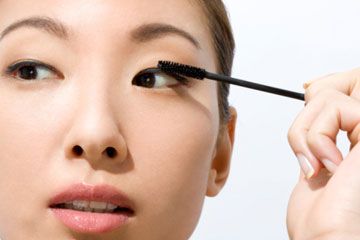Cameron Diaz, Nicole Kidman, Frank Sinatra, Courtney Cox, Paris Hilton and Elvis. What do they have in common? They were all born with the rare appearance of the recessive gene that produces blue eyes. Just two percent of the world's population has baby blues. If you're one of the lucky ones, then you have a natural asset -- an asset you should play up with eye shadows.
Despite what many people think, a blue eye shadow palette is not the best choice to accentuate blue eyes. Bluish shadows tend to take away from the potential impact of the eye's color. To make your eyes pop, use contrasting hues -- the shades found opposite blue on the color wheel. Contrasting eye shadow colors range from brown, mauve and dark purple for the deep eye shadow colors to orange, gold, peach and dusty rose for lighter neutrals.
Advertisement
You'll want to apply three different color eye shadows. A highlight in champagne or pale ecru goes directly under the brow. Dab a little inside the eye next to the tear duct, too, recommends Carmindy, makeup artist on TLC's "What Not to Wear."
Next, take an angled brush and brush the lighter shade of eye shadow across your lower lid. For those with light blue eyes, the contrasting light color is a pale pink. For medium blue eyes, the contrasting light eye shadow color is pale peach. For dark blue or violet eyes, look to gold and pale orange as the neutral to apply to your lower lid.
The third eye shadow is the darker color you'll apply in and across the crease of your eye. Using a small brush with a rounded tip, brush this darker shadow across the crease and then upward toward the brow bone. The dark color in the crease gives your eyes a deep-set appearance and provides a contrasting backdrop that will accentuate your blue irises. Finally, use a small angled brush to line the outer edge of the lower lash with this darker color. This dark eye shadow in the crease and along the lower lashes can be a mauve hue for light blue eyes, a wine tone for medium blue eyes or brown for deep blue eyes.
When it comes to choosing colors, you'll also want to consider your skin tone. Shades look different on those with darker skin compared to those with fair complexions. You also may want to dial down your look with soft or pale shades for daytime at the office and amp it up with deeper, bolder, more heavily applied shades for nighttime at a black-tie event.
Wherever you take your blue eyes, remember put on the best eye shadows, bat those lashes and have fun!
Advertisement


